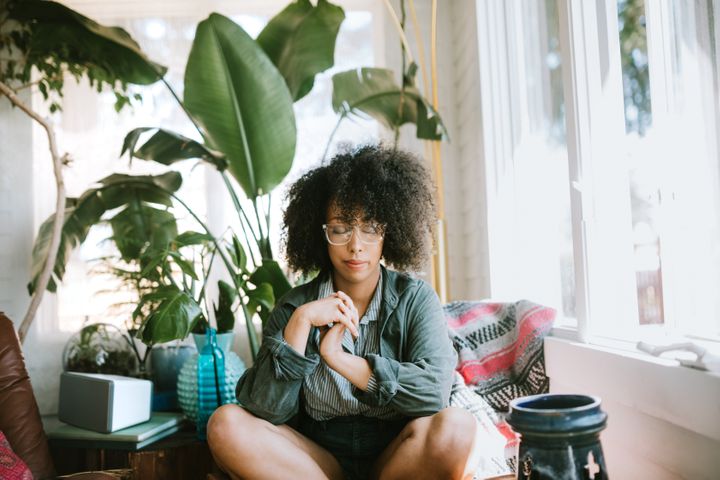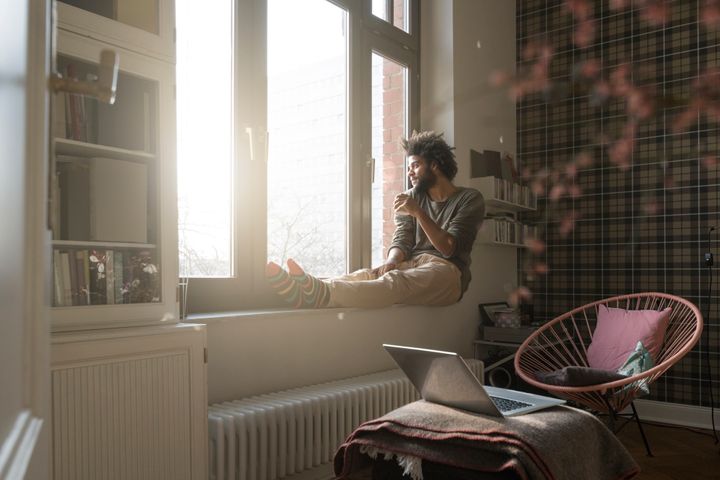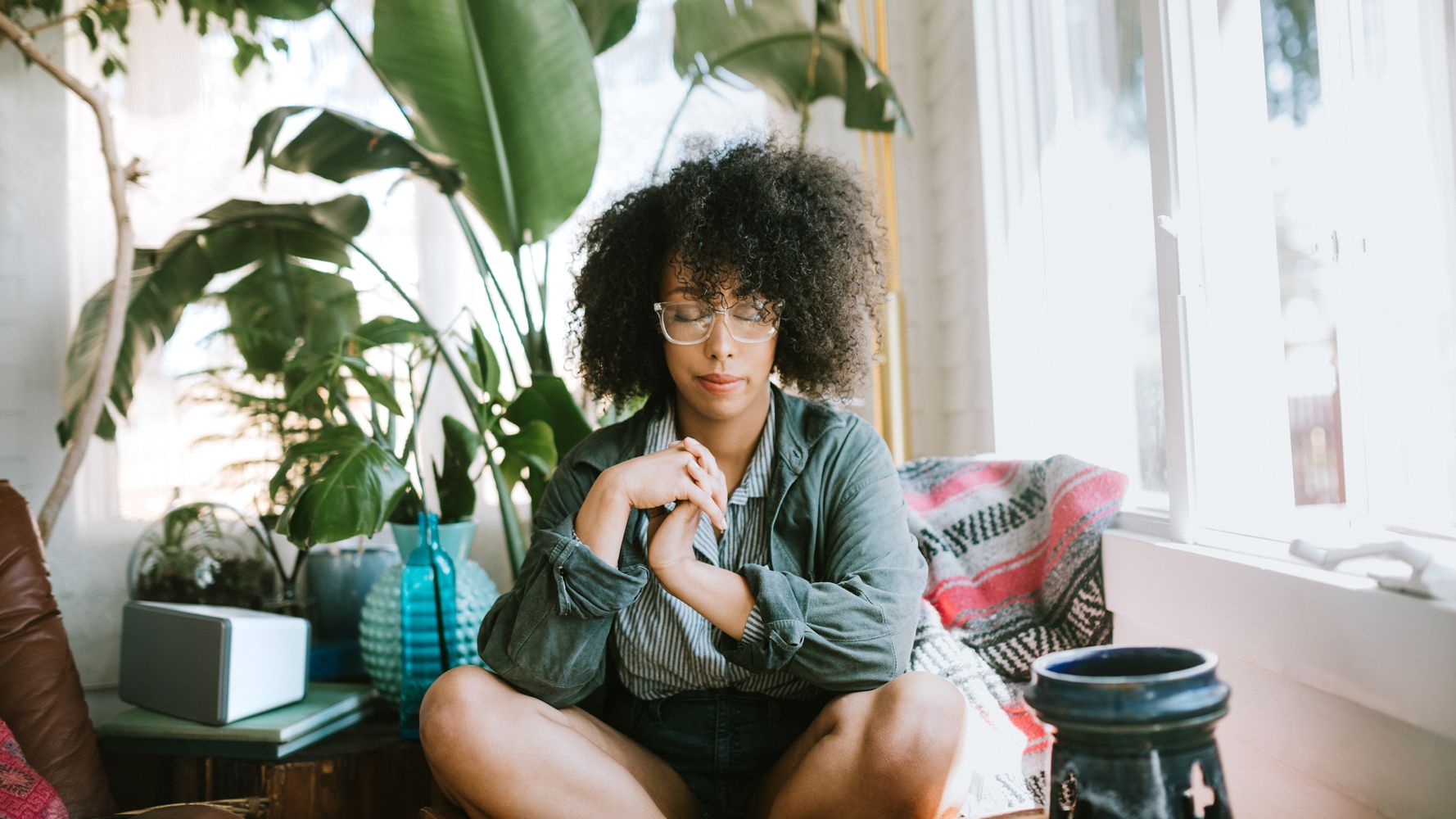[ad_1]
The coronavirus pandemic has been devastating for the Black community, with data showing disproportionate rates of illness and deaths due to socioeconomic factors like insufficient access to health care, crowded and multigenerational living situations, and preexisting medical conditions that increase susceptibility of infection. On top of that, the ongoing police violence targeting Black and brown people ― and the nationwide protests that have since followed ― has triggered a wave of racial trauma that’s difficult to process.
“It creates this perfect storm where you need as much in your toolkit as possible,” AZA Allsop, a psychiatry resident and neuroscience researcher at Yale University, told HuffPost.
Allsop said that now, more than ever, those in the Black community need accessible coping tools. Allsop developed a meditation and mindfulness practice to cope with stress during grad school, and is now working to bring this toolkit to the Black community through free online guided meditation sessions.
Allsop quickly realized that his anxieties arose from “a combination of being in a very high-stress environment but then also having to deal with racial trauma.” After finding that a consistent month of daily meditation eradicated his panic attacks, he became a proponent of sharing his knowledge so others could benefit, too.
Candice Nicole Hargons, a professor of psychology at the University of Kentucky and director of the Center for Healing Racial Trauma, said that practicing meditation and mindfulness is vital to processing and recovering from racial trauma, which can cause ”muscle tension, heart racing, shallow breathing and fatigue.”
“Meditation practices attend to the mind and body,” Hargons explained. “It helps us, first, recognize what our body and mind are experiencing without judgment, and second, release the tension through breath work and meditative practices. It regulates the autonomic system and other stress responses. These stress responses can be either over- or under-active when you experience racial trauma.”
“Especially for Black people in this country, it’s really important to think about because a lot of the other diseases we have, like diabetes, hypertension, hyperlipidemia, have all been shown to vary with stress and to decrease with meditation,” Allsop added. “Engaging in these interventions can lower things like blood pressure and lead to better control of a lot of physical conditions and help with our overall wellness.”
A 2019 study in the journal Behavioral Brain Research found that as little as 13 minutes a day of meditation over an eight-week period improved attention and mood for people who were new to the practice. The study also saw reduced anxiety among subjects ages 18 to 45.
But incorporating mindfulness into daily life isn’t exactly simple. Allsop said there may be a barrier to entry in the Black community, due to cultural, religious and socioeconomic reasons. For one, many “identify as Christian and sometimes meditation practices could be seen as going against a Christian form of spirituality, if one isn’t properly informed about what the practices really are,” he said.
Moreover, “depending on what kind of community you live in, the environment and what mechanisms are available for you, even if you wanted to do self-care, how can you do that if your environment is unsafe or you don’t have money and you can’t go somewhere or hire an instructor?”
Below, the experts share some accessible mindfulness and meditation resources and how to start a regular practice:
Start a daily practice by doing meditation first thing in the morning.
According to Kresence Campbell, psychotherapist and owner of Holly Street Counseling Wellness Services, beginning the day with meditation can “help to start you off with level headedness and it can help you with mood management,” giving you an emotional head start to face whatever challenges the day ahead brings.
“Meditation can help you focus on the here and now and slow down a lot of the buzzing thoughts you have in your mind, and deep breathing helps to increase the flow of oxygen to the brain, which helps release endorphins and calm your body,” Campbell said.
In 2016, soon after the police killings of Alton Sterling and Philando Castile, Hargons created a 17-minute Black Lives Matter Meditation for Healing Racial Trauma, which anyone can access online at her website.
Hargons recommends its daily use in the morning as a “prevention practice,” that serves as a “hedge against the wear and tear of daily racism.” She also recommends using it as an “intervention following a racist stressor when we need something to help us recover from a race-based stress reaction or more chronic racial trauma.”
Campbell also provides low-cost virtual guided meditation at Holly Street Counseling, and recommends the book ”True Refuge” by Tara Brach for those who are just getting started with the practice. Allsop recommends free daily guided meditations through New Haven’s One Village Healing or downloading the Liberate Meditation App to use on your own. Starting out with just three to five minutes of meditation after waking up is a great foundation to build on, with a goal to get up to 10-15 minutes (or more) in a session.

Use a quick grounding exercise during moments of acute stress.
In addition to dedicating a little time every day to meditation, mindfulness tools can be very grounding during moments of high anxiety.
“The stress hormone, cortisol, can manifest in your body, causing pain and discomfort and compromising your immune system,” Campbell said. “During this pandemic, we want to make sure your immune system is as strong as possible so we’re not making ourselves more susceptible to something that’s going on in the world in addition to having all these racial tensions.”
If a moment is particularly stressful, Campbell recommends the DBT 5-4-3-2-1 method to counteract any panic. List five things you can see, four things you can touch, three things you can hear, two things you can smell and one thing you can taste.
“It helps ground you and puts you in the present, and not focus on the past or the future,” she explained.
Deep belly breathing, where you put one hand below your diaphragm and one on your chest, focusing on the body’s sensations, also works to calm the brain and body.
Practice mindfulness in the form of creative pursuits or other activities.
Research shows that crafts (think knitting or coloring) can put the brain in a meditative state. Exercise also releases endorphins and reduces stress, providing a healthy break that is a coping mechanism in and of itself.
Allsop suggested taking time for creative outlets ― like journaling, playing or listening to music or engaging in a spiritual practice like prayer. All of these activities can provide time for reflection as well as emotional catharsis.
“Taking the time to sit with the negative emotion can be a process that begins healing,” he said.

Regular mindfulness will help limit some future stressors.
Part of mindfulness is about creating more self-awareness around the response to physical and emotional stress triggers. Campbell gives the example of seeing something upsetting on your social media feed, and then noticing your chest tightening or that you’re struggling to focus.
“Those are the times you want to take a deep breath, do some counts, in addition to turning it off and limiting exposure to that,” Campbell said. “Stopping and recognizing those feelings going on in your body, being self-aware, that’s another thing mindfulness and meditation help you achieve.”
Campbell reminds clients that meditation and mindfulness is not going to be the quick fix but rather one coping mechanism for negative experiences. Improving mental health, especially when dealing with a diagnosis, can also include going to therapy, engaging in positive lifestyle habits and sometimes taking medication.
[ad_2]
Source link

